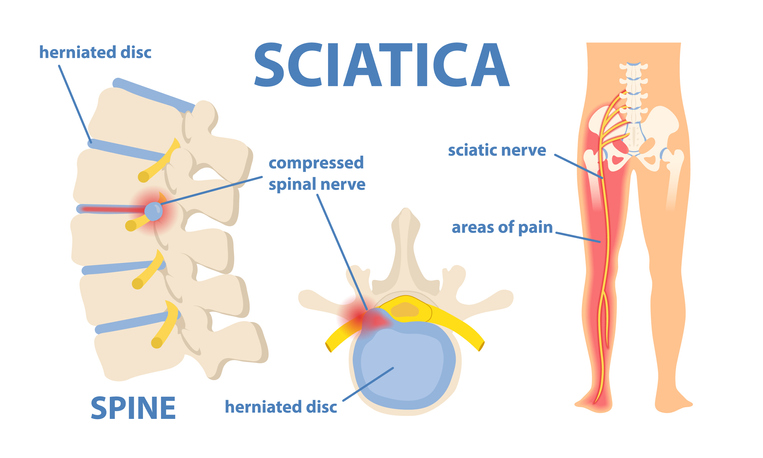Pain
Progression and Possible Complications of Sciatica

What is sciatica?
Sciatica, or sciatic nerve pain, refers to pain that occurs when the sciatic nerve root in the lower back becomes compressed, irritated or inflamed. Sciatic nerve pain radiates from the lower back, into the buttocks, and down the legs. It is most commonly the result of a herniated or slipped disc, bone spurs, or spinal stenosis.
Progression and possible complications
Sciatica typically resolves in four to six weeks; however, chronic or recurrent sciatica can occur. Progressive neurological symptoms, such as numbness, tingling, or leg or knee weakness, may result from severe damage to the sciatic nerve roots, which may become permanent if left untreated.
Possible complications of unresolved sciatica include the following:
- Chronic pain
- Chronic muscle weakness, such as drop foot
- Difficulty walking
- Paresthesia (burning or prickling sensation) in the affected leg
- Muscle loss in the affected leg
- Loss of bowel and/or bladder function
- Permanent nerve damage
- Hyperalgesia
Although rare, cauda equina syndrome (compression of a collection of nerve roots called the cauda equina) can occur suddenly or gradually and requires immediate medical attention. If prompt treatment is not received, it can result in the following:
- Difficulty walking
- Lower body paralysis
- Sudden pain and weakness in both legs
- Numbness of groin, buttocks, genitals and/or inner thighs
- Sexual dysfunction


















